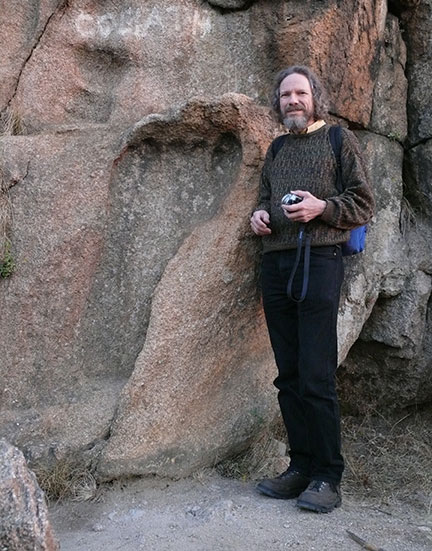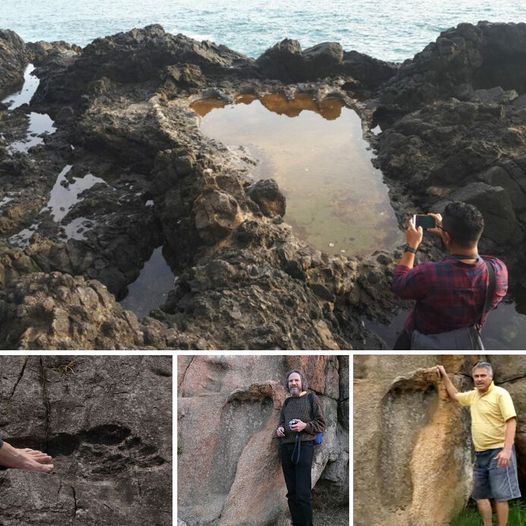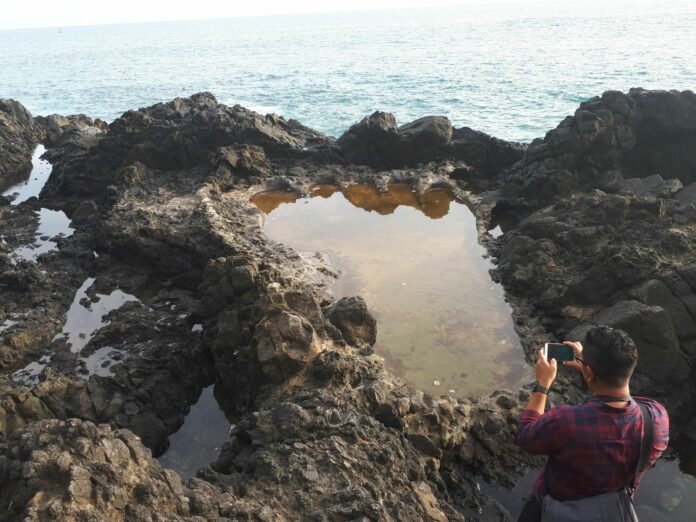Unraveling the Mystery of the Pingyan Giant Footprint: Separating Fact from Fiction
Tales of giants roaming the Earth have captivated human imagination for centuries, with legends and folklore across cultures describing the existence of colossal humanoid beings. From the ancient Greek myths of the Titans to the biblical accounts of Nephilim, the notion of these larger-than-life creatures has long held a firm grip on the collective psyche of humanity. However, when it comes to tangible evidence, the search for proof of these legendary giants has proven to be an elusive and contentious endeavor – until, or so some claim, the discovery of an astonishing giant footprint in the remote village of Pingyan, China.

The Alleged Discovery in Pingyan
In August 2016, a group of photographers reportedly stumbled upon a startling find in the remote village of Pingyan, located in the northwestern Xinjiang region of China. According to the initial reports, the researchers had discovered a fossilized footprint that seemed to belong to a being of truly gargantuan proportions. Measuring an astounding 57 centimeters (22.5 inches) in length and 20 centimeters (8 inches) in width, the sheer size of this print immediately sparked excitement and wonder among those who encountered it.
Proponents of the Pingyan discovery hailed it as a potential breakthrough, suggesting that this fossilized footprint could be the long-sought evidence of the existence of ancient giants – a revelation that, if proven true, could rewrite the pages of human history and evolution. The claims surrounding the Pingyan footprint quickly spread, fueling speculation and debate among conspiracy theorists, cryptozoologists, and even some segments of the scientific community.
Scrutinizing the Claims
However, upon closer inspection, the sensational reports about the Pingyan footprint begin to unravel, as a thorough investigation by the fact-checking website Snopes.com has revealed. The original reports of the discovery were based on unspecified “agency” sources, and no reputable media outlets in the local area had covered the story in any depth. This lack of corroborating evidence from reliable sources immediately raises red flags about the credibility of the claims.

Furthermore, the details provided about the Pingyan footprint itself seem to be questionable at best. According to the reports, the footprint is said to be fossilized in granite, a material that is highly unlikely to preserve such a detailed imprint. Granite, being an igneous rock, typically does not lend itself well to the fossilization process, which requires specific sedimentary conditions to occur.
Additionally, the age of the rock in which the footprint is supposedly embedded is estimated to be around 3.1 billion years old – a figure that is vastly incompatible with the 200 million years claimed by some proponents of the discovery. This stark discrepancy in the reported age of the footprint casts serious doubt on the veracity of the claims made about its origins and authenticity.
The Ongoing Pursuit of Proof
While the Pingyan footprint may have captured the imagination of many, it ultimately falls short of providing conclusive proof of the existence of ancient giants. The Snopes.com investigation highlights the fact that similar alleged giant footprints have been discovered around the world, but most of these claims have been either debunked or identified as belonging to large dinosaurs or other animals, rather than mythical humanoid creatures.

The search for evidence of these legendary beings continues, but as the Snopes.com article suggests, the claims made by conspiracy theorists and enthusiasts often lack the scientific rigor and verifiable data necessary to overturn our current understanding of human history and evolution. As with any extraordinary claim, extraordinary evidence is required, and the Pingyan footprint, as intriguing as it may be, does not yet meet that high bar.

In the end, the Pingyan footprint remains an enigma, a tantalizing glimpse into the realm of the unknown that has captivated the imagination of many. However, without a comprehensive and well-documented investigation, backed by a robust scientific consensus, the true nature of this alleged discovery remains shrouded in uncertainty, leaving the quest for proof of ancient giants unresolved for the time being.
